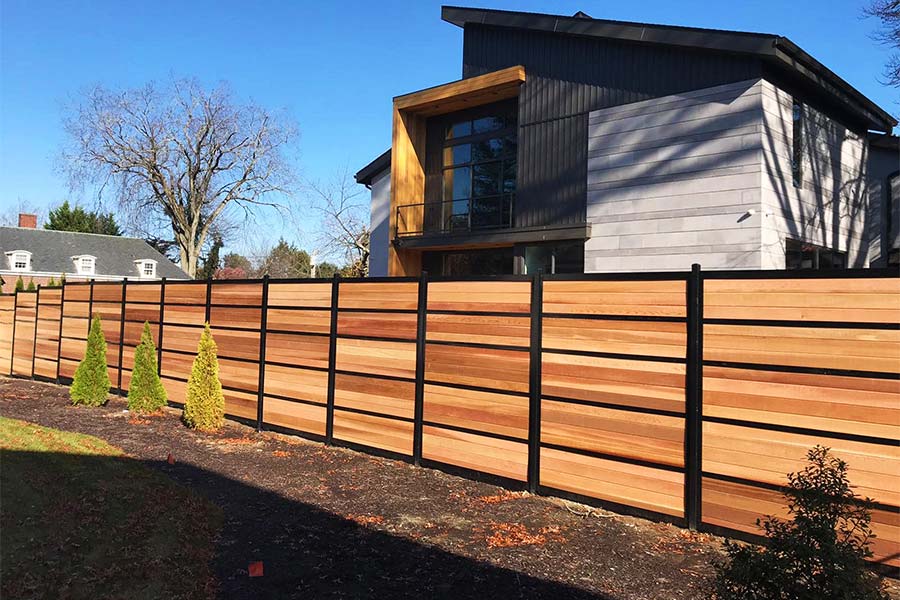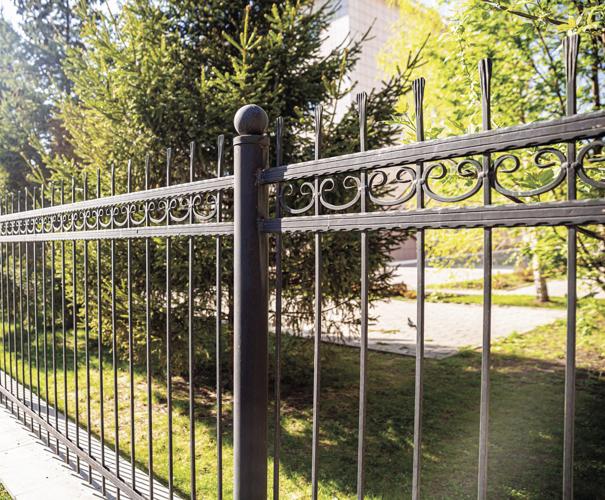All Categories
Featured
A wood fence includes appeal and personality to any kind of property, yet to maintain its charm and functionality, it requires normal maintenance. Among the most important elements of fencing upkeep is painting or staining. Not just does this protect your fence from the aspects, however it likewise helps maintain the wood's all-natural appearance. Nevertheless, numerous home owners wonder: Exactly how frequently should I repaint or tarnish my wooden fence?
The answer depends on a number of elements, including the kind of timber, the climate in your area, and whether the fence is tarnished or repainted. Let's damage down the essential considerations to help you identify the excellent routine for paint or discoloring your wooden fencing.
Sun Direct Exposure: Fence locations with extreme sunlight are more prone to drying out, fading, and cracking. This indicates you might need to paint or restain your fencing every 2 to 3 years to secure it from UV damage. Rainfall and Moisture: Fencings in areas with hefty rainfall or high humidity can take in moisture, causing the wood to swell, warp, or rot. Staining can supply a safety obstacle, but you may need to restain every 2 years approximately to keep the timber sealed and shielded. Snow and Freezing Temperatures: If your fencing is in an area with cold winters, cold and thawing cycles can trigger the paint or stain to peel off and crack. Relying on your climate, you might need to paint or restain every 3 to 5 years. 2. Type of Timber. The type of timber used for your fencing additionally impacts just how typically you need to apply paint or discolor. Different woods respond in different ways to moisture and sunlight, so the upkeep timetable can differ.
![]()
Cedar and Redwood: These naturally sturdy timbers resist rot and bug damage, yet they can fade over time because of sunlight exposure. If you wish to maintain the timber's rich shade, you may need to discolor or secure it every 2 to 3 years. Pine and Fir: Softwoods like ache and fir are more susceptible to weathering, and they have a tendency to soak up wetness quicker. Therefore, you may need to stain or repaint these woods extra often, maybe every 1 to 2 years, to shield versus water damages and discoloration. Pressure-Treated Wood: Pressure-treated timber is developed to stand up to rot and insect damages. It still requires sealing to prevent moisture absorption. Depending on exposure, a great stain or sealer may require to be reapplied every 2 to 3 years. 3. Repaint vs. Stain. Whether you paint or stain your fence can likewise influence exactly how often it needs upkeep.
Paint: Paint supplies a thicker, extra opaque layer of defense, obstructing UV rays and dampness. Paint can chip, peel, and fracture over time, particularly in locations with extreme weather conditions. Normally, repainted fences need to be painted every 3 to 5 years, however this can vary relying on direct exposure to the components. Discolor: Tarnish penetrates the wood, giving an extra all-natural look while offering some protection versus the sunlight and dampness. Tarnish has a tendency to deteriorate quicker than paint, so you might need to restain your fencing more often-- usually every 2 to 3 years. Nonetheless, the advantage of tarnish is that it does not peel, making it much easier to maintain with time. 4. Indicators That It's Time to Paint or Restain. Also if you do not have a collection routine, there are a number of indications that indicate it's time to repaint or restain your fencing:
Discoloring or Discoloration: If your fence has shed its rich shade and shows up discolored or grey, it's time to add a fresh layer of discolor or repaint. Fracturing or peeling: If you discover peeling paint or breaking stain, your fencing is no longer totally safeguarded, and it's time to touch up or begin over. Water Absorption: An easy examination can help you figure out if your fencing is still properly sealed. Spray some water externally; if it grains up, the stain or paint is still doing its work. If the water saturates into the wood, it's time to reapply. 5. Proper Preparation and Application. When it's time to repaint or discolor, proper preparation is crucial for lasting outcomes. Tidy the fence extensively to remove mold, mold, or dust, and repair any kind of broken areas before applying paint or stain. For the best outcomes, select a dry, moderate day for application-- avoid paint in extreme warmth or humidity, as it can create the paint or stain to completely dry too swiftly or erratically.
![]()
Verdict. As a whole, you need to prepare to repaint or stain your wood fencing every 2 to 3 years, though the exact timetable will depend on your environment, the kind of wood, and whether you've painted or tarnished the fencing. Regular maintenance not just aids maintain your fence looking wonderful however additionally expands its life-span by securing the timber from dampness, UV rays, and other ecological variables. By remaining on top of this task, you'll ensure your fence stays both lovely and useful for several years to come.
The answer depends on a number of elements, including the kind of timber, the climate in your area, and whether the fence is tarnished or repainted. Let's damage down the essential considerations to help you identify the excellent routine for paint or discoloring your wooden fencing.
- Climate and Climate Conditions. The environment in your location plays a major role in how commonly your fence requires upkeep. Fences in areas with harsh climate condition, such as high humidity, hefty rain, or extreme sunlight direct exposure, will certainly require even more constant painting or staining than those in pleasant environments.
Sun Direct Exposure: Fence locations with extreme sunlight are more prone to drying out, fading, and cracking. This indicates you might need to paint or restain your fencing every 2 to 3 years to secure it from UV damage. Rainfall and Moisture: Fencings in areas with hefty rainfall or high humidity can take in moisture, causing the wood to swell, warp, or rot. Staining can supply a safety obstacle, but you may need to restain every 2 years approximately to keep the timber sealed and shielded. Snow and Freezing Temperatures: If your fencing is in an area with cold winters, cold and thawing cycles can trigger the paint or stain to peel off and crack. Relying on your climate, you might need to paint or restain every 3 to 5 years. 2. Type of Timber. The type of timber used for your fencing additionally impacts just how typically you need to apply paint or discolor. Different woods respond in different ways to moisture and sunlight, so the upkeep timetable can differ.

Cedar and Redwood: These naturally sturdy timbers resist rot and bug damage, yet they can fade over time because of sunlight exposure. If you wish to maintain the timber's rich shade, you may need to discolor or secure it every 2 to 3 years. Pine and Fir: Softwoods like ache and fir are more susceptible to weathering, and they have a tendency to soak up wetness quicker. Therefore, you may need to stain or repaint these woods extra often, maybe every 1 to 2 years, to shield versus water damages and discoloration. Pressure-Treated Wood: Pressure-treated timber is developed to stand up to rot and insect damages. It still requires sealing to prevent moisture absorption. Depending on exposure, a great stain or sealer may require to be reapplied every 2 to 3 years. 3. Repaint vs. Stain. Whether you paint or stain your fence can likewise influence exactly how often it needs upkeep.
Paint: Paint supplies a thicker, extra opaque layer of defense, obstructing UV rays and dampness. Paint can chip, peel, and fracture over time, particularly in locations with extreme weather conditions. Normally, repainted fences need to be painted every 3 to 5 years, however this can vary relying on direct exposure to the components. Discolor: Tarnish penetrates the wood, giving an extra all-natural look while offering some protection versus the sunlight and dampness. Tarnish has a tendency to deteriorate quicker than paint, so you might need to restain your fencing more often-- usually every 2 to 3 years. Nonetheless, the advantage of tarnish is that it does not peel, making it much easier to maintain with time. 4. Indicators That It's Time to Paint or Restain. Also if you do not have a collection routine, there are a number of indications that indicate it's time to repaint or restain your fencing:
Discoloring or Discoloration: If your fence has shed its rich shade and shows up discolored or grey, it's time to add a fresh layer of discolor or repaint. Fracturing or peeling: If you discover peeling paint or breaking stain, your fencing is no longer totally safeguarded, and it's time to touch up or begin over. Water Absorption: An easy examination can help you figure out if your fencing is still properly sealed. Spray some water externally; if it grains up, the stain or paint is still doing its work. If the water saturates into the wood, it's time to reapply. 5. Proper Preparation and Application. When it's time to repaint or discolor, proper preparation is crucial for lasting outcomes. Tidy the fence extensively to remove mold, mold, or dust, and repair any kind of broken areas before applying paint or stain. For the best outcomes, select a dry, moderate day for application-- avoid paint in extreme warmth or humidity, as it can create the paint or stain to completely dry too swiftly or erratically.

Verdict. As a whole, you need to prepare to repaint or stain your wood fencing every 2 to 3 years, though the exact timetable will depend on your environment, the kind of wood, and whether you've painted or tarnished the fencing. Regular maintenance not just aids maintain your fence looking wonderful however additionally expands its life-span by securing the timber from dampness, UV rays, and other ecological variables. By remaining on top of this task, you'll ensure your fence stays both lovely and useful for several years to come.
Latest Posts
Dependable Industrial Roof Solutions by Weathercraft
Published May 26, 25
1 min read
Join Your Financial Partner at WyHy – Top Benefits for Your Future
Published May 20, 25
1 min read
Uncover Cut Costs on Car Maintenance with Montclare Auto Repair’s Limited-Time Deals
Published May 19, 25
1 min read
More
Latest Posts
Dependable Industrial Roof Solutions by Weathercraft
Published May 26, 25
1 min read
Join Your Financial Partner at WyHy – Top Benefits for Your Future
Published May 20, 25
1 min read
Uncover Cut Costs on Car Maintenance with Montclare Auto Repair’s Limited-Time Deals
Published May 19, 25
1 min read